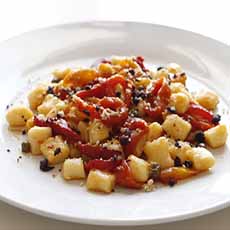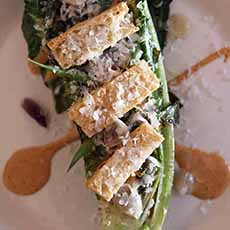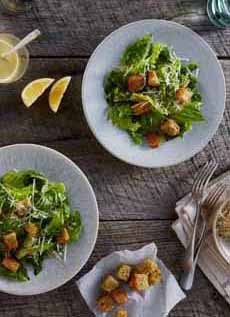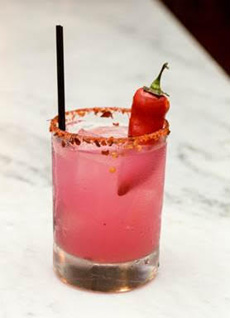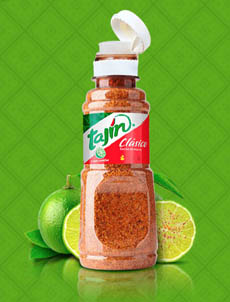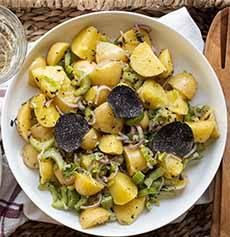|
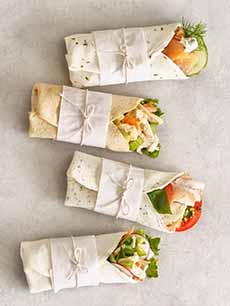
[1] California turkey wrap. Here’s the recipe (photo © Patrick Maese).
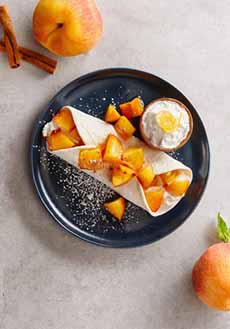
[2] Make a dessert crêpe, here with summer peaches and vanilla yogurt (photos #2, #4, #5, #6 aqnd #7 © Egglife Foods).

[3] Add your favorite fillings and roll into a wrap (photo © All I Need Is Aldi | Facebook).
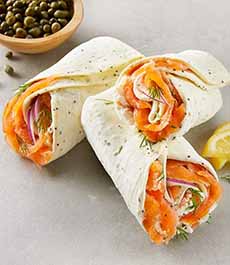
[4] Turn a bagel and lox into an Egglife wrap.
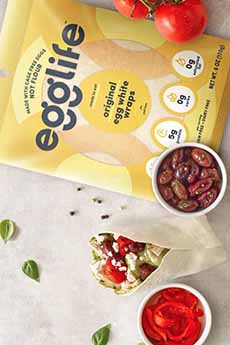
[5] Turn your favorite salad into a wrap. Here, a Greek salad wrap.

[6] How about an Asian chicken salad wrap? Here’s the recipe.
|
|
Our Top Pick Of The Week choices are always wonderful finds. For people who want great taste with few calories, Egglife wraps are at the top of the Top Picks.
Egglife wraps are a healthful, tortilla-like wrap made with cage-free eggs instead of flour. Once you taste them, you’ll wonder why they haven’t been available in stores for years.
Not only are they delicious, but they’re a great source of protein, 5-6 grams per wrap; less than 1 carb, and only 25 to 35 calories. Compare that to an eight-inch tortilla wrap for 130 calories (or worse, a 10-inch wrap, 200 calories).
It’s not just the calories and protein; it’s the flavor!
Egglife egg white wraps are comprised of 95% egg whites or more. They’re all natural, dairy free, fat free, grain free, soy free and vegetarian.
They accommodate almost any diet* and are a delight to eat.
FABULOUS FLAVORS
If there had only been the Original flavor, Egglife wraps would have been satisfying.
But even better, there are wonderfully seasoned varieties that add so much more flavor to anything you make with them.
We even enjoy them on their own, as 25-calorie snacks!
In addition to Original, the flavored varieties include:
Everything Bagel Egg White Wraps
Italian Egg White Wraps
Rye Egg White Wraps
Southwest Egg White Wraps
You’ll have fun matching the flavors with your favorite fillings.
At $5.99 per package of six wraps, they’re affordable, too (the price goes down with multiple purchases online).
GET YOUR EGGLIFE WRAPS
Head to Shop.EgglifeFoods.com.
WAYS TO USE EGGLIFE EGG WHITE WRAPS
Egglife egg white wraps can be served cold or room temperature, straight out of the package; or warmed up as you prefer. Since they’re fully cooked and ready-to-eat, they don’t need to be heated.
But warmed, they may be even more delicious.
Microwave. If you want to heat your wraps in a microwave, 10 or 15 seconds will do it, depending on your microwave.
Stove top. If you want to warm up your Egglife wrap on the stove top, place a skillet over medium/high heat, and warm the wrap for 15-30 seconds per side.
Then:
Fold your wrap part-way and fill it like a taco.
Make grilled cheese in the microwave, skillet or panini press.
Make a sandwich wrap or burrito by folding it in half first, filling it, then rolling it lengthwise. We filled the wrap sandwiches, variously, with avocado, burgers, Caprese (mozzarella, tomato, balsamic, basil), chicken and pesto, egg salad or hard-boiled eggs (that’s eggs times two!), hummus, PB&J (it works with the Original wrap), tuna and veggie medley (cucumbers, mushrooms, shredded cabbage and lettuce, spinach, tomatoes and zucchini).
Make crêpes or omelets for breakfast, lunch or dessert with your favorite filling—sweet or savory. Then fold or roll (the first recipe we made was our mother’s cream cheese and jelly omelet: spread with cream cheese and strawberry preserves).
Cut the wraps into strips for soup and salad garnishes, as is, or browned in a skillet (recommended).
Cut and fry them into a base for nachos.
Layer them into a lasagna.
Make something elegant. We cut the wraps into pinwheels filled with different roes, including salmon and flavored whitefish and trout roes.
There’s a wealth of recipes on the brand’s website.
ARE YOU ON A SPECIAL DIET?
There are plenty of recipes on the Egglife website, including choices flagged for specific diets:
Fat Free Diet
Keto Diet
Paleo Diet
Gluten Free Diet
HOW EGG WRAPS CAME TO BE
Necessity was the mother of invention. Founder Peggy Johns needed to eliminate carbs and sugar from her diet: “Easier said than done,” she notes.
But she’d worked in the egg industry since she was 15, and knew “pretty much all there is to know about eggs, including that they are high in protein and low in carbs—exactly what the doctors said I needed. So I started experimenting.”
She believed there had to be a more delicious way to eat clean. She began replacing flour with eggs, turning carb-heavy foods like wraps into low-carb, low-calorie, zero-sugar, gluten-free replacements for bread, among other foods.
After a lot of trial and error, she developed egg white wraps and used them in recipes that her family loved. Her sons’ football team were also fans. The kids began coming to her house to eat her recipes.
And then it occurred to her that she could help people like herself with the wraps.
If you want to cut carbs and sugar, get Egglife wraps.
For everyone, they’re a more flavorful alternative to bland tortillas.
If you want to eat more creatively, you’ll have fun turning the wraps into everything from crepes to salad garnishes—no cooking required. (Well, just heating, if you want your food hot.)
All of Peggy’s hard work was worth it many times over. We can’t thank her enough for Egglife egg white wraps.
________________
*Except for vegans and people with egg allergies.
|






